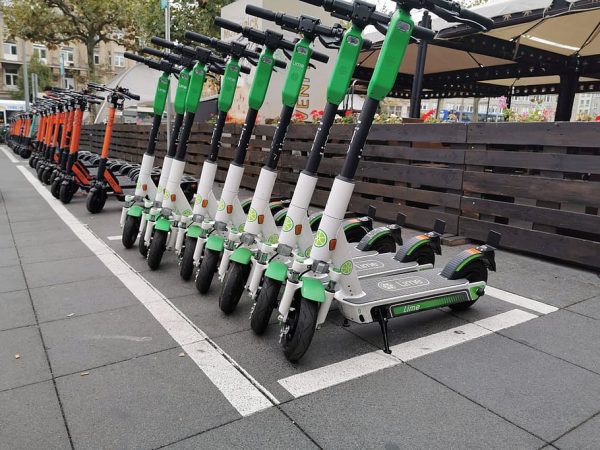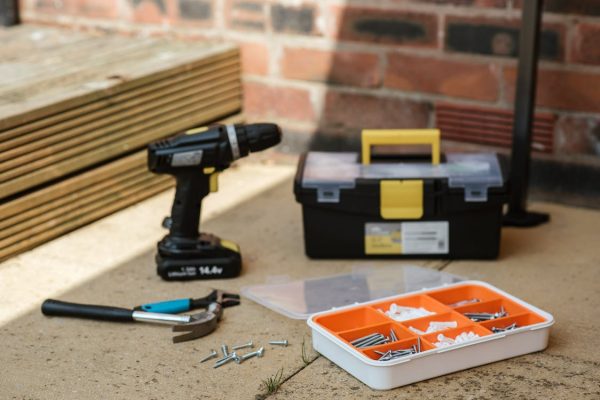We’ve all been there. You’re ready to zip around town on your trusty ride, but it simply won’t start. Or perhaps it’s not running as smoothly as it once did. Scooters, like any mechanical device, can encounter a variety of problems that can leave us scratching our heads in confusion and frustration. It’s not always as simple as hitting the reset button. But don’t worry, FamilyHype is here to help you navigate these problems and get you back on the road again.
This article will guide you through basic maintenance knowledge, teach you how to fix starting problems, and address flat tire issues. We will also tackle loss of power situations and braking system troubles. We’ll cover topics such as battery type, speed controller settings, tire pressure, and brake adjustment, as well as give tips on how to properly maintain and care for your scooter. And if things get too complicated, we’ll advise when it’s best to seek professional help.
So let’s roll up our sleeves together and dive into the world of maintenance and repair!

Key Takeaways
At FamilyHype, we understand the importance of keeping your ride running smoothly. We’ve broken down the most popular problems and tips for electric and manual models, including kick or twist start, so you can quickly get back on the road. From starting problems, flat tires, loss of power, and brake issues, to other matters, we’ve got you covered! Keep in mind, scooters come in all shapes and sizes and it’s not a bad thing to ask for professional help when in doubt.
Let’s keep those wheels turning and make sure your ride is running like a dream! With the right tips and knowledge, you can confidently get your vehicle back up and running in no time.
Understanding Scooter Basics
Before you can tackle any scooter problems, it’s essential to grasp the basics. Let’s dive right in and get you acquainted with your two-wheeled companion. Understanding maintenance and mastering riding techniques are integral parts of ensuring a safe and smooth ride for everyone. Knowledge is power, and that’s why we’re here to help you. Armed with this knowledge, we’re now prepared to delve into the heart of these concerns – starting problems that often stump even seasoned riders.
We are focusing on the basics, which include understanding the components of the vehicle, such as the frame, wheels, brakes, and handlebars, as well as the various parts that make up the motor, such as the spark plug, speed controller, circuit breaker, air filter, and battery pack. Additionally, it’s important to learn about scooter safety, such as wearing a helmet and other protective gear, and following traffic regulations. Lastly, mastering riding techniques, such as accelerating, braking, and cornering, is essential for a safe and enjoyable ride.
We hope this article has provided you with a better understanding of these two-wheeled vehicles and their components. Please share your feedback with us and let us know how we can make this content even better for you!

Troubleshooting Starting Issues
When you’re all set for a ride on your electric scooter, but it refuses to come to life, don’t worry! Knowing how to fix starting problems is key for a successful ride every time.
Let’s start by looking at the ignition switch to make sure there are no problems. Then, let’s inspect the battery connections and charge level. We’ll also need to ensure fuel is reaching the engine properly and the spark plugs are functioning correctly. After we’ve tackled these start-up hitches, we can enjoy a smooth ride.
Resolving Flat Tire Issues
Dealing with a flat tire on your electric vehicle can be a real pain, but don’t worry–FamilyHype is here to help! We want to provide you with the best advice regarding tire replacement and puncture prevention. Our goal is to get you back on the road in no time. Learning about your scooter’s parts, including the tires, inner tubes, wheel sizes, and valve stems, is important. Doing so will also prevent future flats.
Troubleshooting Loss Of Power
We’re now shifting gears to tackle another concern: a loss of power. Often, this can be traced back to the fuel system or the carburetor. So, let’s dive in and figure out how to check the fuel system and inspect the carburetor for any possible issues that could be causing your ride’s power loss.
Checking Fuel System
Let’s now turn our attention to the vehicle’s fuel system, as it’s often the culprit for many concerns. This process will help us locate any potential problems swiftly and efficiently, so you can get back on the road as soon as possible. Inspect the fuel system, which includes checking for fuel contamination (dirt or water), tank leakage, blockage in the fuel line, and the condition of the petrol filter. By closely examining these components, we can quickly identify any potential issues and get to the bottom of the problem.
Inspecting The Carburetor
After ensuring our fuel system is in order, let’s turn our attention to the carburetor. Regular carburetor cleaning prevents it from clogging and aids in maintaining peak engine performance of electric scooters. If there are still issues, a carburetor adjustment might be necessary. This task can be tricky but it’s crucial for your ride’s health.
Now that we’ve got the engine running smoothly, let’s shift gears and delve into troubleshooting brake problems related to scooters, including electric scooters, motor scooters, and kick scooters.
Troubleshooting Brake Problems
Next on our agenda of common scooter issues is a crucial matter that every scooter owner should be well-versed in – troubleshooting brake problems. We’ll primarily delve into two key areas:
- The wear and tear of brake pads, which can diminish braking effectiveness over time.
- Issues with brake cables and the brake lever that could lead to unresponsive or sluggish braking.
Understanding these components and how to fix them can make all the difference between a safe ride and potential danger.
Brake Pad Wear And Tear
If you’re noticing a grinding noise when you hit the brakes on your ride, it’s likely time to inspect your brake pads for wear and tear. Safety is of utmost importance. That’s why it’s essential to understand brake pad materials and familiarize ourselves with pad installation techniques in order to keep our vehicles in good condition.
Knowing how to identify problems, such as brake pad wear and tear, brake cable issues, and brake fluid levels, can go a long way in keeping our vehicles in working order.
Brake Cable Issues
Don’t you hate it when your brakes just don’t feel right? Well, chances are you might be dealing with brake cable issues. We suggest that you check for adequate cable lubrication and proper adjustment. These simple fixes can often solve the issue. When it comes to brake cable issues, you should always ensure that your ride is properly lubricated and adjusted, as this can help with functionality, performance, and durability. However, it’s not always a DIY job; sometimes, brake cables require extra attention that only professionals can provide.
So let’s discuss when to seek professional help.

When To Seek Professional Help
Sometimes, despite your best efforts, problems persist, and it’s time to push through and admit you’re out of your depth. When dealing with issues like engine overheating or ignition failures, we recommend seeking professional help for safety and efficiency.
If the problem persists after DIY fixes, when the issue involves complex parts, or in case of regular breakdowns, it may be time to consider professional help. In particular, if you’re experiencing persistent engine overheating or ignition failures, we recommend that you wait and seek the advice of a professional. Seeking professional help when dealing with repairs is essential for safety and efficiency.
Conclusion
We’ve covered some basic problems and how to find solutions for them safely. From starting problems, flickering lights, flat tires, loss of power, brake issues, and other concerns, we’ve got you covered! Keep in mind that scooters, like all vehicles, come in all shapes and sizes, from electric to manual, kick or twist start, and the list goes on. It’s not bad to ask for professional help when in doubt.
At FamilyHype, we understand the importance of keeping your ride running smoothly. We’ve broken down the most common issues and tips so you can quickly get back on the road. Let’s keep those wheels turning and make sure your ride is running like a dream!
Frequently Asked Questions About Troubleshooting Common Scooter Issues (FAQs)
How Do You Troubleshoot A Scooter?
If your e-scooter isn’t running, check if the battery is fully charged. Then, check all the wires and components for any damage. If that doesn’t yield any results, check your battery port, charger, and the battery pack’s voltage.
What Are Common Scooter Issues?
As with any vehicle, even the right electric scooter is bound to run into issues. Some common scooter problems you may encounter include unresponsive brakes, wobbly wheels, damaged accessories, and flat tires.
How Do You Troubleshoot Slow Scooters?
If your electric scooter is slow, even at full throttle, there are several things you can try. First, charge the battery. If that doesn’t work, try replacing your battery or using a different battery charger. If it’s not a battery issue, it might be a problem with the motor or circuit breaker, which is best assessed by a professional.
Why Does My Scooter Keep Cutting Out?
The first thing you should do is check the battery and your scooter’s motor and circuit breaker. Is it warm to the touch? Are there any loose parts and components? Make sure everything is secured properly.
Why Do Scooters Struggle To Start?
There are several reasons why your scooter’s engine might fail to start. One major reason might be the presence of dirt and debris in your fuel filter. This is one of the first things you should check.
How Do I Know If My Scooter Battery Is Bad?
You can check your scooter battery’s health by using a multi, which is a device that will tell you your battery’s output. This is the easiest way to tell if your battery needs to be replaced with a new one.
Why Won’t My Scooter Pick Up Speed?
If your scooter’s acceleration doesn’t seem to be working
Why Is My Scooter Turning On But Not Moving?
One of the most basic causes of a scooter not moving or accelerating is a defective battery pack. Do a quick check to determine if your battery has gone bad and needs replacing.
How Do I Keep My Scooter Battery Healthy?
One way you can keep your battery is by charging it as often as possible. You don’t need a precise charging schedule but try to keep your battery between a range of 30% and 80%. Also, make sure you’re using the right battery charger for your e-scooter. It also helps to store your scooter in a cool, dry place.
Is It Bad To Overcharge A Scooter Battery?
Yes. Overcharging your scooter battery can cause it to degrade, damaging its capacity.
DISCLAIMER (IMPORTANT): This information (including all text, images, audio, or other formats on FamilyHype.com) is not intended to be a substitute for informed professional advice, diagnosis, endorsement or treatment. You should not take any action or avoid taking action without consulting a qualified professional. Always seek the advice of your physician or other qualified health provider with any questions about medical conditions. Do not disregard professional medical advice or delay seeking advice or treatment because of something you have read here a FamilyHype.com.